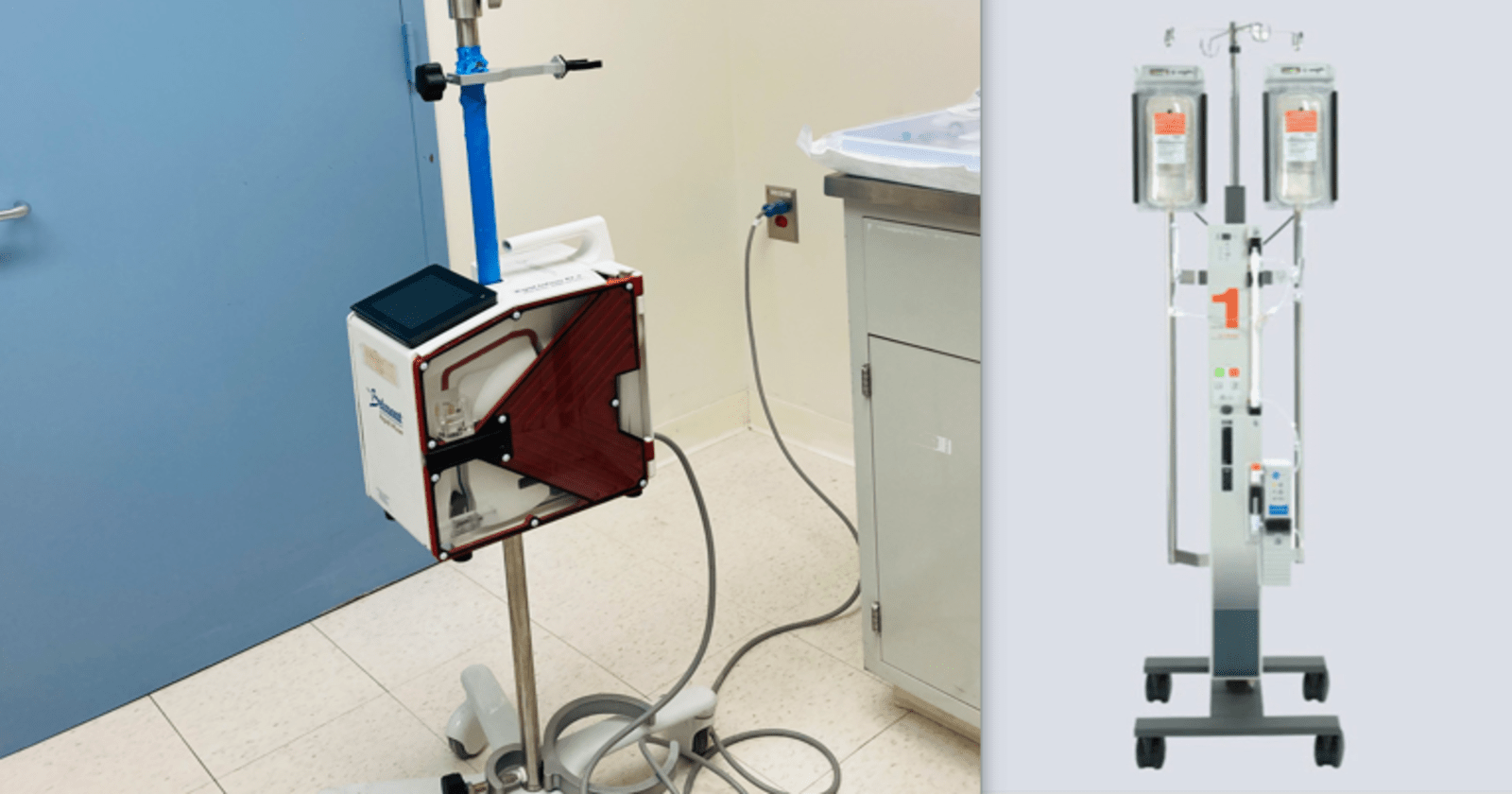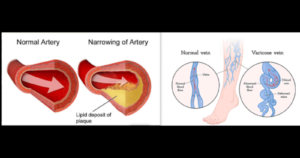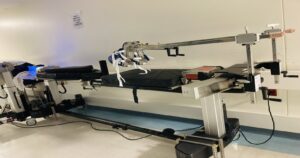Both the Level 1 Rapid Infuser and the Belmont Rapid Infuser are essential medical equipment in managing clinical shock. They are specifically designed to rapidly infuse warmed blood and crystalloid fluids into a patient’s circulatory system.
This swift intervention is crucial in stabilizing patients who are experiencing shock due to major hemorrhage, traumatic injuries, or conditions like placental abruption or even excessive blood loss during surgical procedures.
Certainly, while both the Level 1 Rapid Infuser and the Belmont Rapid Infuser share the primary function of rapidly infusing warmed fluids for clinical shock management, they do have distinct features that set them apart.
What is the Belmont Rapid infuser
The Belmont Rapid Infuser establishes a standard of excellence in the prompt and dependable delivery of warmed blood and fluids.
This straightforward, secure, and efficient life-saving technology instills trust in clinicians, both civilian and military, across the globe on a daily basis. developed by Belmont Instrument Corp and was introduced in 1999 and nearly all machines purchased are still in use.
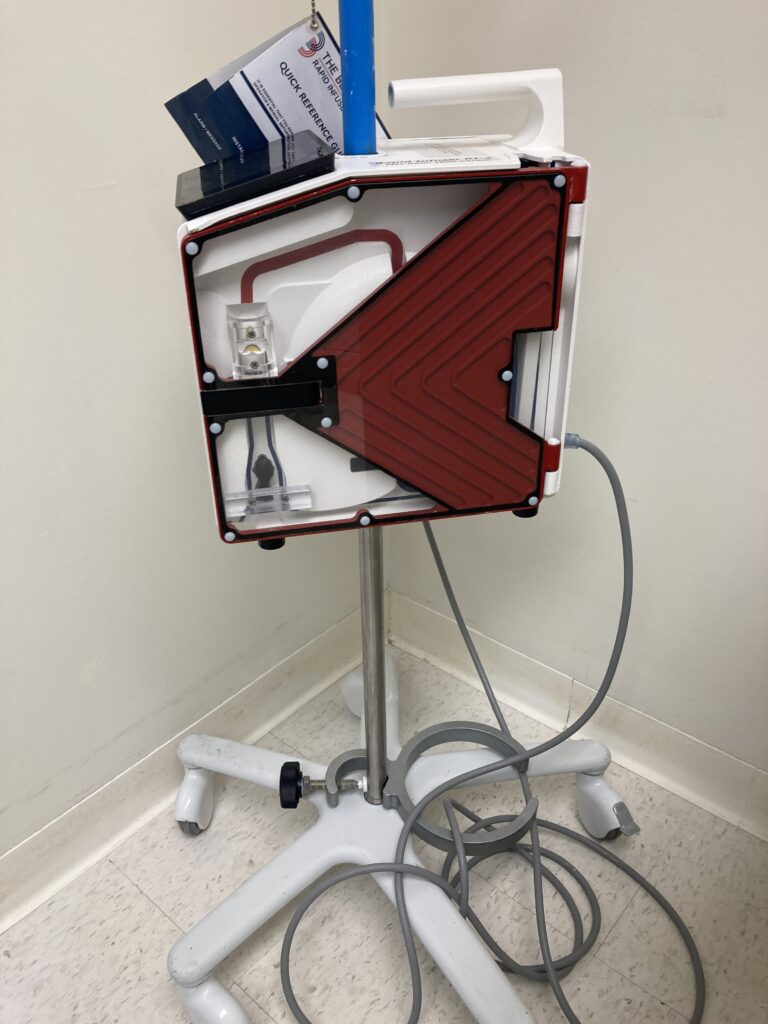

Functions and Purpose of the Belmont vs level 1 Rapid infuser
Belmont Rapid infuser
Functionality: The Belmont Rapid Infuser works by utilizing a combination of pressure and temperature control to deliver fluids or blood products at a rapid rate while minimizing the risk of hemolysis (rupture of red blood cells) or other complications.
It can warm fluids to body temperature before infusion, reducing the risk of hypothermia in patients.
Purpose: The primary purpose of the Belmont Rapid Infuser is to support rapid fluid resuscitation in patients with acute blood loss or severe hypovolemia.
By delivering large volumes of fluids or blood products quickly, it helps to restore circulating volume, improve tissue perfusion, and prevent organ failure in critically ill patients.
It is particularly valuable in emergency departments, operating rooms, and intensive care units where timely intervention is essential for patient survival.
Level 1 Rapid infuser
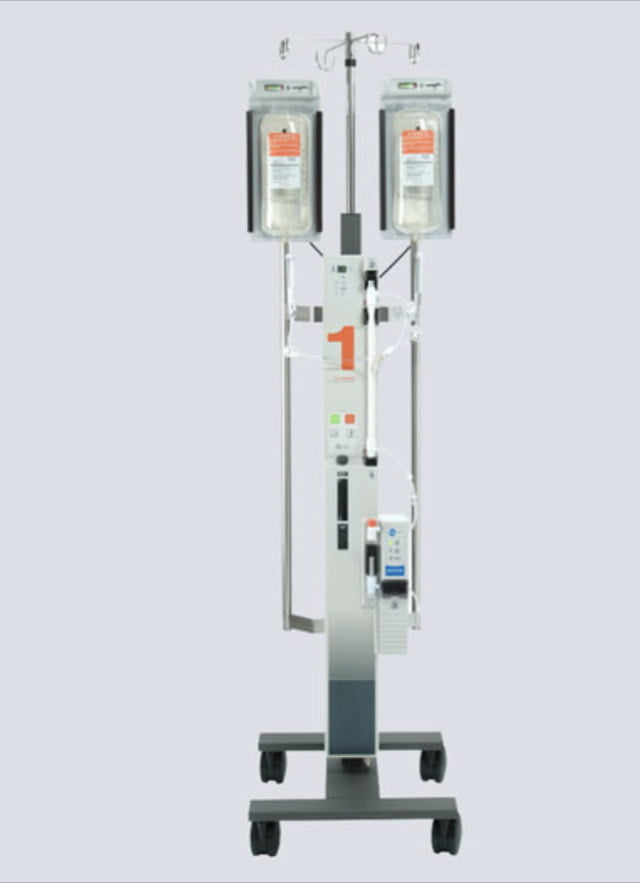
Functionality: The Level 1 Rapid Infuser functions similarly to the Belmont Rapid Infuser, utilizing pressure and temperature control mechanisms to deliver fluids or blood products rapidly and accurately.
It also includes a console unit and a disposable set with tubing and a reservoir bag. The device can warm fluids to body temperature before infusion, minimizing the risk of hypothermia.
Purpose: The primary purpose of the Level 1 Rapid Infuser aligns closely with that of the Belmont Rapid Infuser: to facilitate rapid fluid resuscitation in critically ill patients.
It is used in emergency departments, operating rooms, and intensive care units to manage acute blood loss, severe dehydration, shock, or other life-threatening conditions requiring immediate intervention.
By administering fluids or blood products swiftly, the Level 1 Rapid Infuser helps stabilize patients, optimize tissue perfusion, and improve outcomes in critical care settings.
The pros and cons of the Belmont Rapid Infuser
| Pros | Cons |
|---|---|
| Rapid Fluid Warming: Capable of heating fluids to body temperature quickly, ensuring patient comfort and preventing hypothermia. | Cost: High initial investment compared to some other infuser models. |
| High Flow Rates: Delivers fluids at high flow rates, which is crucial during major surgeries or trauma cases. | Maintenance: Requires regular maintenance and calibration to ensure optimal performance. |
| Safety Features: Includes alarms for air detection, occlusion, and overheating, enhancing patient safety. | Size and Portability: Larger and less portable compared to some compact models. |
| User-Friendly Interface: Easy-to-use touchscreen interface for quick setup and operation. | Complexity: Advanced features may require additional training for staff. |
| Reliable Performance: Proven track record in various clinical settings for reliability and efficiency. | Power Dependency: Requires a reliable power source, which can be a limitation in certain emergency or field settings. |
| Versatile Use: Suitable for a wide range of fluids including blood, crystalloids, and colloids. | Disposables Cost: Ongoing cost for disposable components, which can add up over time. |
Unique Features & Qualities of the Belmont
- Precision Control: Belmont Rapid Infusers are known for their precise control over the infusion rate, allowing healthcare providers to administer fluids and blood products at a controlled rate,(At rates from 2.5 to 1000 ml per minute).
- Warm Blood and Fluids: Many Belmont Rapid Infusers have integrated Precise, high-speed warming capabilities, which means they can warm the fluids and blood products before infusion, helping to prevent hypothermia in patients.
- Air Detection: They often come equipped with Automatic air detection and removal systems to minimize the risk of air embolism during infusion.
- Large Volume Capacity: Belmont Rapid Infusers can handle high volumes of fluids, making them suitable for massive transfusion protocols and trauma situations.
- Portability: Some models are designed to be portable and can be easily moved to different areas of the hospital or clinical setting.

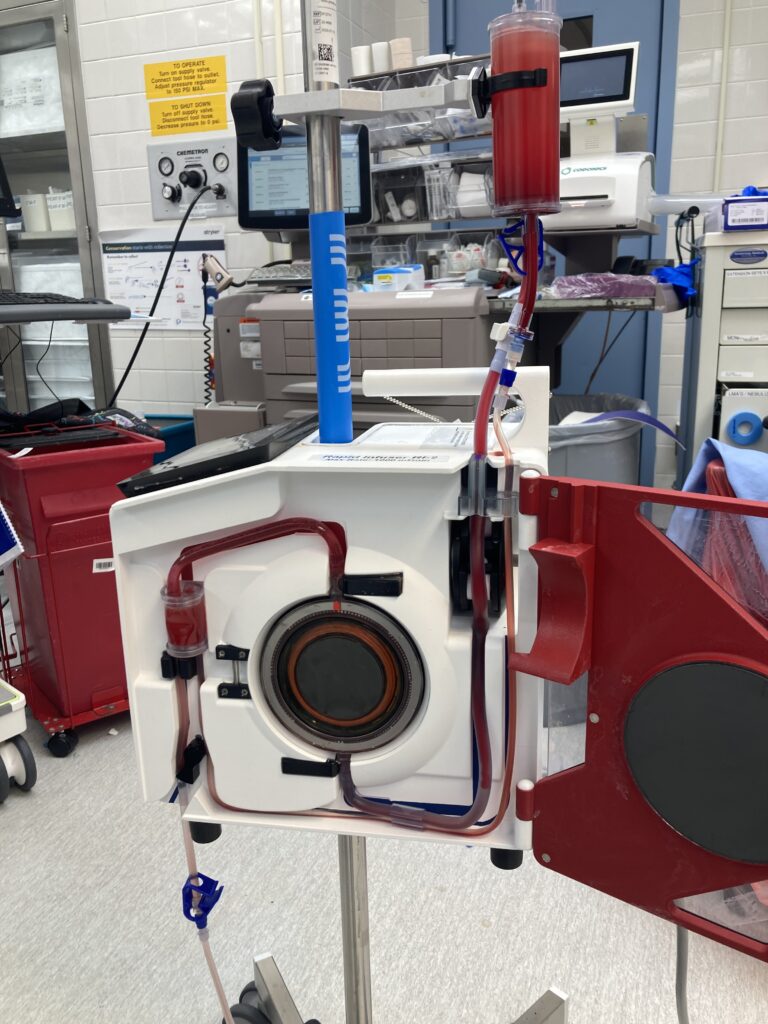
- Intuitive touchscreen display. The Belmont touch screen display allows for quick device operation.
- Aluminum-free disposables, The 3-Spike Disposable Set stands as the sole disposable necessary for the full spectrum of flow rates on The Belmont® Rapid Infuser. Its color-coded design ensures straightforward installation, arriving pre-assembled with seamless connections among the heat exchanger, reservoir, and patient line. Within the sterile fluid path, medical-grade stainless steel rings boast an expansive surface area, yielding an almost imperceptible temperature differential between the heat exchanger and the fluid. Additionally, the quick-connect luer fittings facilitate on-the-fly exchange of the reservoir to the larger 3.0 L option mid-operation.
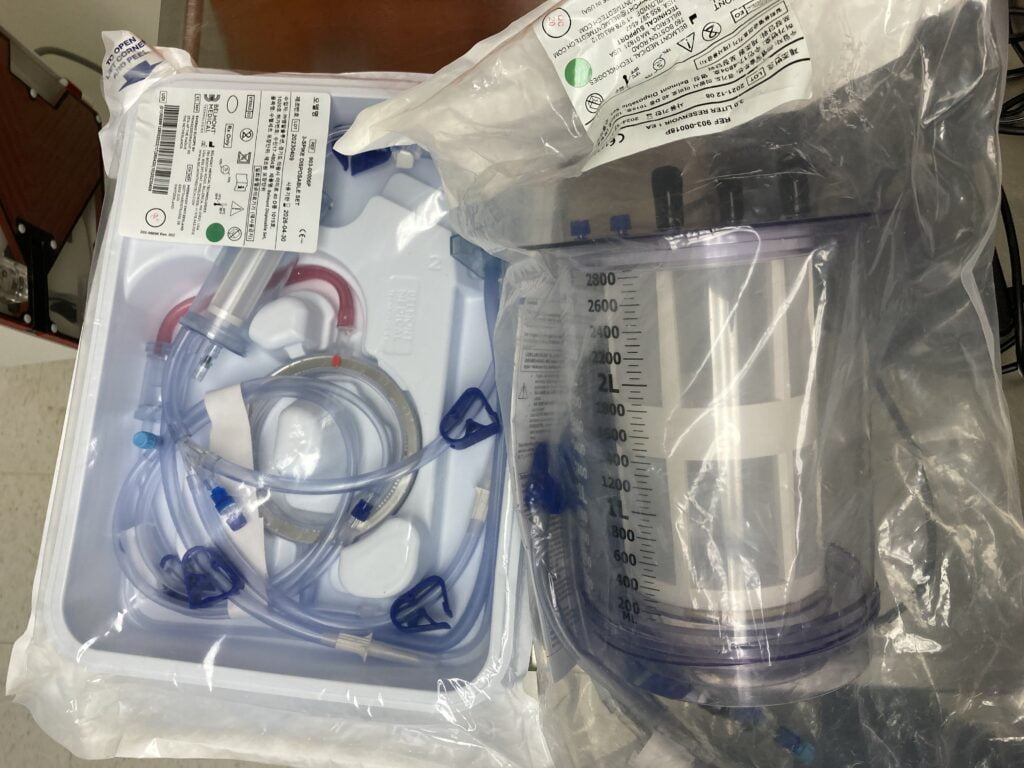
- Fast, Automatic Priming ,The Belmont Rapid Infuser RI-2 fully primes in under 1 minute and easily re-primes without disconnecting from the patient.
How to set up the belmont Rapid Infuser RI-2
- Preparation and Safety Checks
- Inspect the Device: Ensure the Belmont Rapid Infuser (BRI) is clean, undamaged, and all components are present.
- Verify Power Supply: Ensure the device is connected to a proper power source and check for any power issues.
- Set Up a Clean Area: Prepare a clean, sterile workspace to maintain aseptic conditions.
- Device Assembly
- Open the Device: Open the front cover to access the disposable set insertion area.
- Insert the Disposable Set: Carefully insert the sterile disposable set into the device following the manufacturer’s guidelines. Ensure all connections are secure.
- Close the Cover: Once the disposable set is properly inserted, close the front cover securely.
- Priming the System
- Connect Fluid Source: Attach the IV fluid bag to the input port of the disposable set. Ensure the fluid is compatible with the patient’s treatment plan.
- Prime the Lines: Open the clamps and allow fluid to flow through the tubing to remove air bubbles. Close the clamps after priming to prevent air from entering the system.
- Check for Air Bubbles: Ensure all air is expelled from the system to avoid air embolism.
- Set Up the Patient Connection
- Attach the Patient Line: Connect the patient line from the disposable set to the patient’s IV access point. Ensure a secure connection.
- Secure Connections: Double-check all connections to ensure they are tight and secure to prevent leaks.
- Device Operation
- Turn On the Device: Power on the Belmont Rapid Infuser using the main switch.
- Set the Desired Temperature: Adjust the temperature settings as required, usually between 37°C to 41°C for rapid infusions.
- Select Flow Rate: Set the desired flow rate for infusion based on the clinical situation and patient needs.
- Monitor the Device: Observe the device’s display for temperature, flow rate, and pressure readings.
- Begin Infusion
- Start the Infusion: Initiate the fluid infusion by pressing the start button. Monitor the patient and device closely for any signs of malfunction or adverse reactions.
- Adjust Settings as Needed: Make any necessary adjustments to flow rate or temperature based on patient feedback and clinical judgment.
- Ongoing Monitoring
- Regular Checks: Continuously monitor the infusion process, including the fluid levels, device performance, and patient condition.
- Respond to Alarms: Be prepared to respond to any alarms or alerts from the device. Follow troubleshooting guidelines if necessary.
- Completion of Infusion
- Stop the Infusion: Once the desired amount of fluid has been infused, stop the device using the appropriate controls.
- Disconnect and Dispose: Safely disconnect the patient from the infuser and dispose of the disposable set following hospital protocol and biohazard guidelines.
- Post-Use Care
- Clean the Device: Perform routine cleaning and maintenance of the Belmont Rapid Infuser according to manufacturer instructions.
- Document the Procedure: Ensure all relevant details of the infusion process are documented in the patient’s medical records.
Safety Precautions when setting up the Belmont
- Always follow the manufacturer’s instructions and hospital protocols.
- Ensure all connections are secure and free of leaks.
- Continuously monitor the patient and device throughout the procedure.
- Be prepared to intervene immediately in case of device malfunction or patient adverse reactions.
Advantages and Disadvantages of the Belmont Rapid infuser
| Advantages | Disadvantages |
|---|---|
| High infusion rates (2.5 to 1,000 ml/min) | Dependency on power for heating |
| Safety features (air detectors and temperature probes) | Initial cost and maintenance |
| Ease of use (waterproof LCD touchscreen, quick priming) | Training requirement for medical personnel |
| Portability (28 pounds, can be mounted or freestanding) | Size and weight may be challenging in constrained spaces |
| Battery backup (continuous operation during power outages) | Limited battery operation functions (no heating) |
| Can work with the blood navigation system |
Advantages
- High Infusion Rates:
- The Belmont Rapid Infuser RI-2 can deliver fluids at rates ranging from 2.5 to 1,000 ml/min, allowing for rapid response in critical situations such as trauma or massive blood loss (Soma Tech Intl’s Blog) (SOFMEDICA.com).
- Safety Features:
- Equipped with multiple safety mechanisms, including two air detectors and two temperature probes, the RI-2 minimizes the risk of air embolism and ensures the fluids are at the optimal temperature for patient safety (Belmont MedTech) (SOFMEDICA.com).
- Ease of Use:
- The user-friendly design features a waterproof LCD touchscreen for intuitive operation. It primes in approximately 13 seconds, enabling quick setup and operation in emergency scenarios.
- Portability:
- Weighing 28 pounds and designed to be mounted on an IV pole or used as a freestanding unit, the RI-2 is portable and versatile, suitable for use in various medical settings, including hospitals and field environments (Soma Tech Intl’s Blog) (SOFMEDICA.com).
- Battery Backup:
- The rechargeable battery allows the device to operate during power outages, ensuring continuous operation. This feature is particularly crucial in settings where power reliability may be an issue .
Disadvantages
- Dependency on Power for Heating:
- While the device has a battery backup, the heating function does not operate on battery power. This limitation can be problematic in scenarios where maintaining the temperature of fluids is crucial, but power supply is unreliable (Soma Tech Intl’s Blog).
- Initial Cost and Maintenance:
- The Belmont Rapid Infuser RI-2 may represent a significant initial investment for healthcare facilities. Additionally, ongoing maintenance and potential repairs can add to the overall cost of ownership.
- Training Requirement:
- Proper use of the rapid infuser requires training for medical personnel. The advanced features and safety mechanisms necessitate a learning curve to ensure efficient and safe operation .
- Size and Weight:
- Despite being portable, the device’s weight (28 pounds) and size may still pose challenges in extremely constrained spaces or when rapid movement between locations is necessary (Belmont MedTech).
- Limited Battery Operation Functions:
- Not all functions operate on battery power. While infusion can continue during a power outage, the device cannot heat the fluids without an external power source, which might be a critical requirement in certain medical scenarios.
The Belmont Rapid Infuser RI-2 offers significant advantages in terms of rapid fluid delivery, safety features, ease of use, and portability.
However, potential users should consider its dependency on power for heating, initial and maintenance costs, training requirements, and operational limitations on battery power.
Balancing these factors will help in determining the suitability of the RI-2 for specific medical settings and situations.
Warning when using the Belmont Rapid infuser
The Belmont Rapid Infuser, FMS2000, is not for use in warming platelets, Cryo-precipitates, or granulocyte suspensions.
–Do not mix lactated Ringer’s or other solutions containing calcium with citrated blood products.
Use only anticoagulated blood products
-Not to be use in environment with high Oxygen level.
-Not to be use in the presence of Nitrous Oxide.
- Do not left unattended while in operation.
Stopping the Belmont after Transfusion
- Stop the pump if it’s running.
- Securely clamp the patient line and bag spikes.
- Use the circuit breaker to turn off the system.
- Open the system door and take out the disposable set. Adhere to standard hospital procedures for handling and disposing of bio-hazardous materials.
Considerations when using the Belmont
Rapid fluid infusion carries risks including venous air embolism (VAE), hypothermia, and infuser-related bloodstream infection
Uses of the Belmont Rapid Infuser and the level 1 rapid infuser
1. Trauma and emergencies: Both Crafted to minimize response time and conserve essential resources while facilitating swift administration of fluids. Administration of crystalloid, colloid, or blood products (including packed red blood cells) for volume replacement in patients with blood loss due to trauma or surgery.
2. Anesthesia: Both maintain patient temperature, also maintaining intraoperative normothermia, preventing core hypothermia

3. Surgical care: Replace fluids lost during procedures and maintains consistent patient temperature during surgical procedures by keeping fluids given warm. Delivery of warmed blood and fluids.
4. Labor and Delivery: Postpartum hemorrhage (PPH) remains the most common and serious complication of labor and delivery. Prompt activation of massive transfusion protocol (MTP) can save a new mother life during postpartum hemorrhage.
5. Intensive care: Creates a quick response in a highly stress environment like the ICU.
6. Military: quick use and response during a battle field trauma where mass protocol infusions maybe required.
Belmont training video
How the belmont works with the blood navigation system
Blood navigation systems typically refer to technologies that help in tracking and monitoring the infusion of blood products, ensuring accurate delivery and avoiding complications like air embolism or incorrect dosing.
These systems may include advanced software and hardware to monitor the flow rate, temperature, and other parameters of the infused fluids.
The Belmont Rapid Infuser, when integrated with a Blood Navigation System (BNS), works synergistically to enhance the safety, efficiency, and accuracy of blood and fluid resuscitation in critical care settings. Here’s how the two systems typically work together:

- Belmont Rapid Infuser:
- Function: Rapidly delivers warmed fluids and blood products to patients.
- Features: Includes advanced safety features like air bubble detection, pressure monitoring, and automatic shutoff.
- Blood Navigation System (BNS):
- Function: Tracks and manages blood products from donation to transfusion.
- Features: Provides real-time visibility into blood inventory, patient compatibility, and transfusion history.
Integration and Workflow:
- Real-Time Data Exchange:
- The Belmont Rapid Infuser can be connected to the BNS via a wired or wireless network, allowing real-time data exchange.
- Infusion parameters (e.g., flow rates, volume infused, temperature) are sent to the BNS for continuous monitoring and documentation.
- Patient Identification and Blood Matching:
- The BNS uses patient identification data to ensure the correct blood products are matched and delivered to the right patient.
- The BNS verifies the compatibility of the blood product before infusion begins, minimizing the risk of transfusion errors.
- Tracking Blood Products:
- The BNS tracks the blood products’ journey from the blood bank to the patient’s bedside.
- It records information such as blood type, expiration date, and donor information, ensuring traceability and accountability.
- Automated Documentation:
- Infusion details recorded by the Belmont Rapid Infuser are automatically documented in the patient’s electronic medical record (EMR) through the BNS.
- This automation reduces manual entry errors and ensures comprehensive documentation of the transfusion process.
- Safety Monitoring:
- The BNS continuously monitors the infusion process, alerting medical staff to any discrepancies or issues (e.g., adverse reactions, incorrect blood product).
- The Belmont Rapid Infuser’s safety features, such as air bubble detection and pressure monitoring, work in tandem with the BNS to enhance patient safety.
- Inventory Management:
- The BNS helps manage blood inventory by providing real-time updates on blood product usage and availability.
- The integration with the Belmont Rapid Infuser ensures that inventory data is accurate, reflecting the actual usage of blood products in real-time.
- User Interface:
- Medical staff interact with a unified interface provided by the BNS, which includes data from the Belmont Rapid Infuser.
- This centralized system simplifies the workflow, allowing staff to monitor and manage blood infusions from a single platform.
Benefits of Integration:
- Enhanced Safety: Reduced risk of transfusion errors through automated checks and real-time monitoring.
- Improved Efficiency: Streamlined workflow with automated data exchange and documentation.
- Comprehensive Monitoring: Continuous oversight of infusion parameters and blood product tracking.
- Accurate Inventory Management: Real-time updates on blood product usage and availability.
Example Workflow:
- Preparation: The medical staff prepares the Belmont Rapid Infuser and connects it to the patient.
- Verification: The BNS verifies the patient’s identity and matches the blood product.
- Infusion: The Belmont Rapid Infuser starts the infusion, warming the blood to body temperature.
- Monitoring: The BNS continuously monitors the infusion, receiving real-time data from the Belmont device.
- Documentation: All infusion details are automatically documented in the patient’s EMR via the BNS.
- Alerts: Any issues or discrepancies are immediately flagged by the BNS, ensuring prompt intervention.
By combining the rapid infusion capabilities of the Belmont device with the comprehensive tracking and management features of the Blood Navigation System, healthcare providers can deliver safer, more efficient, and more accurate blood and fluid resuscitation to patients in critical need.
What is the Level 1 Rapid infuser
The Level 1 blood and fluid warmers from Smiths Medical help reduce the risk and allow for early diagnosis of hypothermia, hyperthermia, and malignant hyperthermia. Level 1 temperature management systems used in clinical care settings help to monitor and regulate patient temperature through rapid infusion of normothermic blood and I.V. fluids, as well as routine blood and fluid warming.

level 1 Rapid infuser from Smith Medical
- Rapid Infusion: Level 1 Rapid Infusers are designed for rapid and high-volume fluid administration, similar to Belmont infusers.
- Temperature Control: They often include temperature control features to warm the fluids and blood products to body temperature before infusion.
- Air Detection: Like Belmont, Level 1 Rapid Infusers typically have air detection systems to prevent air embolism.
- User-Friendly Interface: They usually come with user-friendly interfaces and controls for easy operation in critical situations.
- Compatibility: Level 1 Rapid Infusers may be compatible with a range of different IV bags and blood products.
It’s important to note that the specific features and capabilities of these devices can vary based on the model and version.
Per FDA US Food and Drug Administration the manufacturer of record for Level 1 Fast Flow Fluid Warming System, NORMOFLO, Fluid Warmer, and Level 1 Normothermic I.V. Fluid Administration Set, as of August 18, 2021, was recalled, being performed out of an abundance of caution due to the potential for aluminum ions leaching into certain intravenous solutions and blood products before transfusion/infusion to a patient.
Exposure to toxic levels of aluminum could potentially lead to serious injury or possibly death, depending on the treatment being administered and the patient’s condition was voluntarily recalling certain models of these devices.
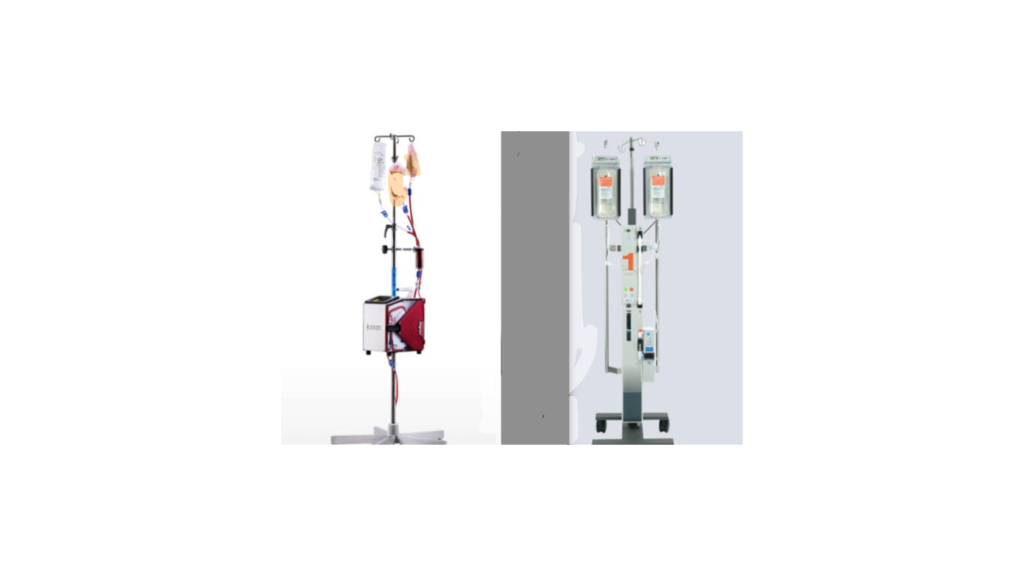
With the ongoing progress in research and technology, there is a strong belief that forthcoming developments will result in the removal of aluminum from IV administration sets, ultimately elevating the standards of this product.
Differences between Belmont Rapid infuser and Level 1 Rapid Infuser
| Belmont Rapid Infuser | Level 1 Rapid Infuser |
|---|---|
| Temperature Control: manage and regulate temperature of the fluids they infuse | Temperature Control: manage and regulate the temperature of the fluids they infuse |
| User Interface: More straightforward and easier to use in emergency situations. | User Interface: require more manual steps for setup and operation. It often involves connecting various tubing and ensuring proper calibration before initiating infusion. |
| Infusion Rate Control: renowned for its meticulous control over the infusion rate, allowing healthcare providers to administer fluids and blood products at a controlled rate, ranging from 2.5 to 1000 ml per minute. | Infusion Rate Control: Crystalloid administration under 300mmHg pressure: 18g cannula: 240 ml/min 16g cannula: 440 ml/min 14g cannula: 500 ml/min |
| Temperature Measurement: Directly measures the temperature of the fluids infused. | Temperature Measurement: Measure the temperature of the bath that is used to heat the fluid infused. |
| Set Up: uses a disposable cartridge system that can simplify setup and reduce the risk of contamination. | Set Up: Require more manual steps for setup and operation |
Fluids that is compatible with Belmont vs Level 1 rapid infuser
| Belmont Infuser | Level 1 Rapid Infuser |
|---|---|
| Crystalloids: Ringer’s lactate, Normal saline, Plasma-Lyte A | Crystalloids: Ringer’s lactate, Normal saline |
| Colloids: 5% Albumin, 25% Albumin, 20% Human Albumin | Colloids: 5% Albumin, 25% Albumin, 20% Human Albumin |
| Blood Products: Packed red blood cells (PRBCs), Fresh frozen plasma, | Blood Products: Packed red blood cells (PRBCs), Fresh frozen plasma, |
Step by step guide to set up a level 1 rapid infuser
Setting up a Level 1 rapid infuser is crucial for ensuring the safe and efficient administration of fluids and blood products in emergencies. Here are the steps to set up a Level 1 rapid infuser:
Equipment Needed
- Level 1 rapid infuser device
- Disposable administration set (infuser tubing)
- IV fluids or blood products
- Pressure bags or other pressure infusion devices (if applicable)
- IV catheters and extension sets
- Sterile gloves and other standard PPE
Step-by-Step Setup
- Preparation:
- Wash hands thoroughly and wear sterile gloves.
- Gather all necessary equipment and check expiration dates on all products.
- Device Setup:
- Place the Level 1 rapid infuser on a stable surface or mount it on an IV pole.
- Ensure the device is plugged into an electrical outlet and turned on.
- Priming the Administration Set:
- Remove the administration set from its packaging, maintaining sterility.
- Attach the administration set to the IV fluid or blood product bag. Ensure that the spike is fully inserted.
- Open the roller clamp to allow fluid to fill the tubing and remove air bubbles. Close the clamp once the tubing is primed.
- Connecting to the Rapid Infuser:
- Attach the primed administration set to the appropriate port on the rapid infuser.
- Ensure all connections are secure to prevent leaks.
- Setting Up the Pressure Bag (if applicable):
- Place the IV fluid or blood product bag inside the pressure bag.
- Inflate the pressure bag to the recommended pressure, usually around 300 mmHg.
- Connecting to the Patient:
- Select an appropriate IV catheter and site for infusion. Typically, a large-bore IV (16 or 18 gauge) is preferred for rapid infusion.
- Clean the IV insertion site with antiseptic solution.
- Insert the IV catheter and secure it in place.
- Connect the distal end of the administration set to the IV catheter.
- Operation:
- Double-check all connections to ensure they are secure.
- Set the desired flow rate on the rapid infuser device.
- Monitor the patient closely for any signs of adverse reactions, such as fluid overload or transfusion reactions.
- Monitoring and Maintenance:
- Continuously monitor the infusion site, flow rate, and patient’s vital signs.
- Replace IV fluid or blood product bags as needed, ensuring to prime the tubing each time to prevent air embolism.
- Document the infusion process, including the type and amount of fluids or blood products administered.
Post-Infusion Care
- Once the infusion is complete, disconnect the administration set and dispose of it according to your facility’s protocol.
- Monitor the patient for any delayed adverse reactions.
- Document the completion of the procedure and any observations.
Proper setup and usage of a Level 1 rapid infuser can significantly improve patient outcomes in critical situations. Always adhere to your institution’s protocols and manufacturer guidelines.
Pros and Cons of the Level 1 Rapid Infuser
| Pros | Cons |
|---|---|
| Rapid Fluid Delivery: Capable of delivering fluids at high flow rates, essential for emergency and critical care situations. | Cost: High initial purchase price and potential high cost for disposable components. |
| Effective Warming: Efficiently warms fluids to body temperature, helping to prevent hypothermia in patients. | Size: Larger and less portable, making it less ideal for transport or field use. |
| Safety Features: Includes multiple safety alarms for air detection, temperature monitoring, and occlusion, ensuring patient safety. | Training Required: Advanced functionality may require specific training for medical staff to operate effectively. |
| User-Friendly Interface: Simple controls and clear displays for easy operation and monitoring. | Power Dependency: Requires a stable power source, limiting use in environments without reliable electricity. |
| Reliable and Consistent Performance: Known for reliability and consistent performance in various clinical settings. | Maintenance: Needs regular maintenance and periodic calibration to maintain accuracy and functionality. |
| Versatility: Suitable for a wide range of fluids, including blood, colloids, and crystalloids. | Consumables Cost: Ongoing cost for disposables, which can be a significant factor in long-term use. |
This table highlights the primary strengths and weaknesses of the Level 1 Rapid Infuser, providing a balanced view of its performance and usability in medical settings.
Medication Administration through Belmont and Level 1 Rapid Infusers
- Can medications be administered through the Belmont Rapid Infuser?
- Yes, medications can be administered through the Belmont Rapid Infuser. It is designed to handle various fluids, including medications, making it suitable for rapid infusion of drugs during critical care situations.
- Is it safe to administer medications through the Level 1 Rapid Infuser?
- Yes, the Level 1 Rapid Infuser can also be used to administer medications. However, it’s essential to follow the manufacturer’s guidelines and ensure that the medications are compatible with the device’s materials and the infusion process.
- Are there any special considerations for administering medications through these infusers?
- Yes, special considerations include ensuring the compatibility of the medication with the infuser’s materials, monitoring the infusion rate to prevent rapid administration of certain drugs, and using inline filters if recommended by the medication manufacturer.
- How do these devices handle the mixing of medications with fluids?
- Both the Belmont and Level 1 infusers can mix medications with fluids during infusion. The Belmont Rapid Infuser, with its advanced fluid management system, offers more precise control over the mixing process.
- Are there any risks associated with administering medications through rapid infusers?
- Risks include potential incompatibility of medications with the device materials, rapid administration causing adverse effects, and the possibility of air embolism if not properly managed. Both devices have safety features to mitigate these risks.
- Do these infusers require specific types of tubing or accessories for medication administration?
- Yes, both the Belmont and Level 1 infusers may require specific types of tubing and accessories designed to be compatible with medication administration. It’s important to use the recommended supplies to ensure safety and efficacy.
- Can blood products and medications be administered simultaneously through these infusers?
- Yes, both devices can administer blood products and medications simultaneously. However, care must be taken to prevent cross-contamination and ensure proper compatibility and administration rates for both types of fluids.
Common Questions people ask about the belmont and the level 1 and Answers
- What are the primary differences between Belmont and Level 1 rapid infusers?
- The Belmont Rapid Infuser offers a more advanced fluid management system with precise control and monitoring, while the Level 1 Rapid Infuser is known for its simplicity and reliability in delivering high volumes of warmed fluids quickly.
- Which rapid infuser is faster in delivering fluids?
- Both infusers are designed for rapid delivery, but the Belmont Rapid Infuser typically has a faster maximum flow rate due to its sophisticated pumping mechanism.
- How do the warming capabilities compare between the two devices?
- The Belmont Rapid Infuser usually provides more consistent and controlled fluid warming, whereas the Level 1 Rapid Infuser is effective but may have more temperature fluctuations.
- Which device is easier to set up and operate?
- The Level 1 Rapid Infuser is generally considered easier to set up and operate due to its straightforward design, whereas the Belmont Rapid Infuser requires more initial setup but offers more advanced features.
- Are there significant differences in safety features?
- The Belmont Rapid Infuser typically includes more advanced safety features such as air bubble detection and automatic pressure regulation, whereas the Level 1 Rapid Infuser focuses on essential safety mechanisms.
- What are the maintenance and operational costs associated with each device?
- The Belmont Rapid Infuser tends to have higher maintenance and operational costs due to its complexity and advanced technology, while the Level 1 Rapid Infuser has lower costs due to its simpler design.
- Which infuser is more suitable for different medical settings?
- The Belmont Rapid Infuser is ideal for high-acuity settings where precise control and monitoring are crucial, such as trauma centers and operating rooms. The Level 1 Rapid Infuser is well-suited for a wider range of settings, including emergency departments and general hospital use, due to its ease of use and reliability.
Disclaimer
The information provided in this article is for educational purposes only and is not intended as a substitute for professional medical advice, diagnosis, or treatment. Always seek the advice of your physician or other qualified health provider with any questions you may have regarding a medical condition or medical equipment. Never disregard professional medical advice or delay in seeking it because of something you have read in this article.
Resource:
https://www.icumed.com/about-us/news-events/news/2023/level-1-fast-flow-fluid-warmer
Personal experiences as an R.N in a Level 1 Trauma center New York.
